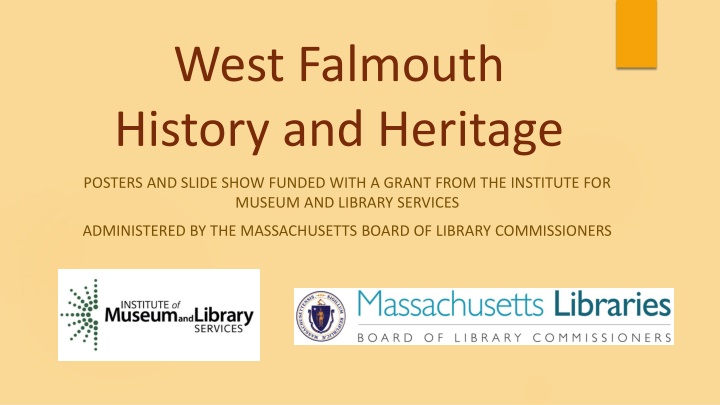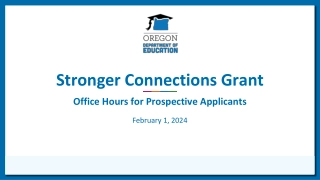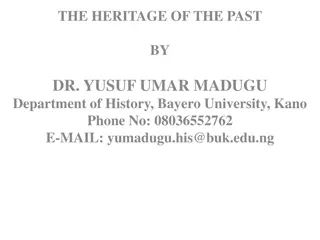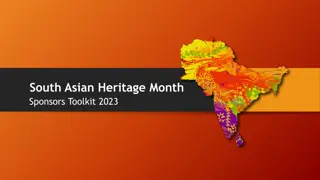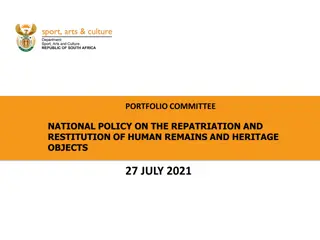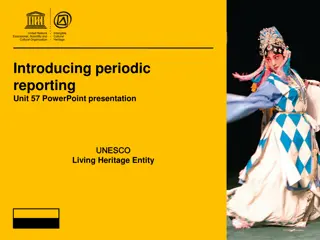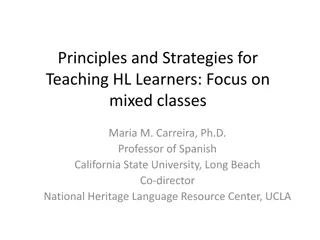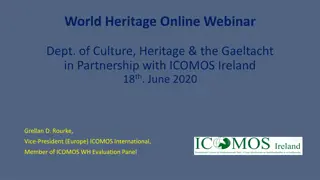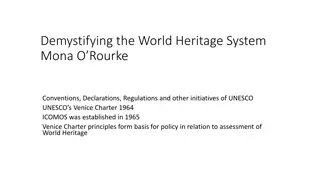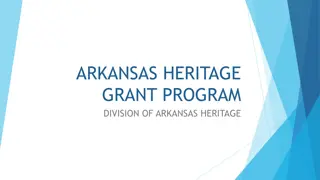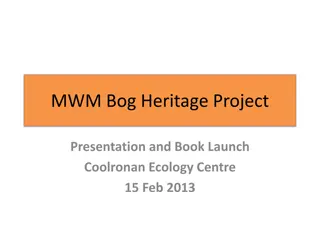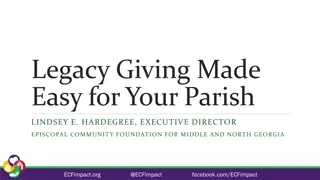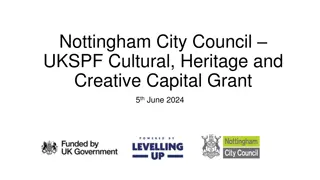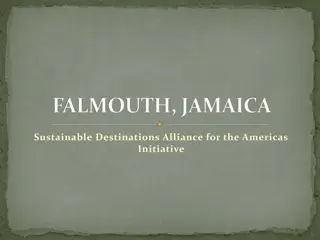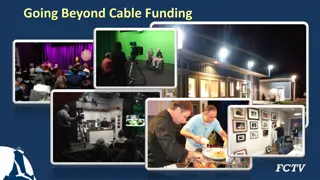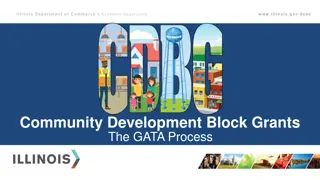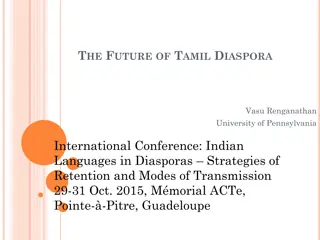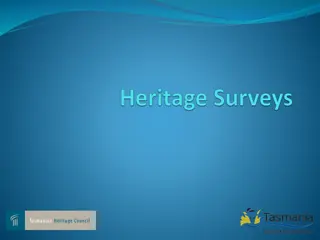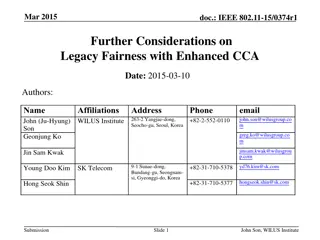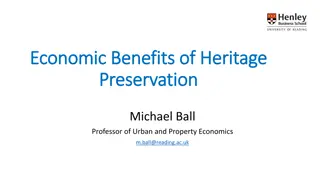Legacy of West Falmouth: Unveiling History and Heritage with Grant Support
The posters and slide show funded through a grant from the Institute for Museum and Library Services shed light on the rich history and heritage of West Falmouth. Delving into the deep-rooted past of the Mashpee Wampanoag Tribe and the first European settlers in the region, the exhibits narrate the impact of devastating epidemics and the intricate interplay between native populations and early colonizers. Explore the narratives of resilience, loss, and cultural exchange that have shaped the landscape of West Falmouth over millennia.
Download Presentation

Please find below an Image/Link to download the presentation.
The content on the website is provided AS IS for your information and personal use only. It may not be sold, licensed, or shared on other websites without obtaining consent from the author.If you encounter any issues during the download, it is possible that the publisher has removed the file from their server.
You are allowed to download the files provided on this website for personal or commercial use, subject to the condition that they are used lawfully. All files are the property of their respective owners.
The content on the website is provided AS IS for your information and personal use only. It may not be sold, licensed, or shared on other websites without obtaining consent from the author.
E N D
Presentation Transcript
West Falmouth History and Heritage POSTERS AND SLIDE SHOW FUNDED WITH A GRANT FROM THE INSTITUTE FOR MUSEUM AND LIBRARY SERVICES ADMINISTERED BY THE MASSACHUSETTS BOARD OF LIBRARY COMMISSIONERS
First Settlers-The Wampanoag The Mashpee Wampanoag Tribe, also known as the People of the First Light, have inhabited present day Massachusetts and Eastern Rhode Island for more than 12,000 years. From 1616-1619 a devastating epidemic ravages the Native population just before the arrival of the first permanent English settlers. Researchers identify the epidemic as possible cholera, small pox, typhus or plague. Scientists today identify the epidemic as leptospirosis. The epidemic can be attributed to 1615 when a French trading vessel wrecked off the coast near Plymouth. The local Wampanoag Indians, who d seen many of their people (including the famous Squanto) kidnapped by Europeans, kill all the survivors except for four men who they turn into slaves. One of these men was ill and thought to be responsible for the first epidemic. http://inthepastlane.com/of-plague-and-pilgrims-how-a-devastating-epidemic-shaped-the-first-thanksgiving-nov-18- 2012/
First Settlers-The Wampanoag Accounts by traders, Pilgrims, and Natives (and confirmed by modern researchers) show the epidemic (most likely multiple epidemics) kills approximately 90% of the Native population in southern New England. In 1600 approximately 8,000 Wampanoags live near Plymouth. By 1620 that number is reduced to 2,000. In 1621 Robert Cushman, observes that the Great Epidemic seemed to sap the Indians of courage. [T]heir countenance is dejected, he wrote, and they seem as a people affrighted even though they might in one hour have made a dispatch of us, yet such a fear was upon them, that they never offered us the least injury in word or deed. Fear of the Pilgrims and threats posed by the powerful Narragansett Indians to the south, prompts the Wampanoag leader, Massasoit, to make peace and establish an alliance with the Pilgrims in the spring of 1621. http://inthepastlane.com/of-plague-and-pilgrims-how-a-devastating-epidemic-shaped-the-first-thanksgiving-nov-18- 2012/
The Wampanoag in Suckannessett The Wampanoags occupy the Falmouth area for thousands of years prior to European migration. They call the land Suckannessett, place by the sea where the black wampum is found. (Black wampum was made from purple quahog shells and used as a type of currency between Native tribes in New England). The Wampanoag prize the area as a summer camp and leave behind few signs of their settlement. Neighboring tribes also prize Falmouth as a resort destination. Queen Awashonks of the Narragansett tribe in Rhode Island is said to have spent several summers in what is now Falmouth Heights. A large Native American cemetery was still identifiable in 1843 along Nashawena Street west of Old Windmill Lane in West Falmouth.
First European Settlers-Suckannessett Bartholomew Gosnold visits Cape Cod in May 1602. He lands with 33 men on Cuttyhunk, intending to start a colony there. The colony is never established. However, one of Gosnold s campanions writes the following about the area: "We stood a while like men ravished at the beautie and delicacy of this sweet soile; for besides divers cleere Lakes of fresh water (whereof we saw no end) Meadows very large and full of greene grasse; even the most woody places (I speake onely of such I saw) doe grow distinct and apart, one tree from another, upon greene grassie ground, somewhat higher than the Plaines, as if Nature would shew herself above her power, artificial. Falmouth Past and Present. League of Women Voters of Falmouth.
First European Settlers-Falmouth In 1660 fourteen families travel by boat from Barnstable to Suckannessett and settle between Siders Pond and Salt Pond. They were led by Isaac Robinson, son of a Pilgrim minister. Robinson had upset the General Court in Plymouth and was disenfranchised for 13 years. He also upsets the Barnstable elders by protesting the harassment and persecution of Quakers, prompting his move to Suckannessett. Jonathan Hatch, another original settler, develops strong ties of mutual friendship and respect with the local Wampanoag tribe. The Cape Cod Wampanoags did not join other New England tribes in 1675 to fight in King Phillip's War. It was a point of pride with the Suckannessett settlers that all native land procured for settlement was purchased rather than taken from the Wampanoags.
WestFalmouthQuaker Settlement 1657: The first Quaker meeting is held in Sandwich. 1661: Settlers from Falmouth, Sandwich, and Barnstable acquire property in West Falmouth. 1673: William Gifford moves from Sandwich and becomes the first Quaker landowner in West Falmouth, purchasing 40 acres of upland at Sippewissett from Job Attukkoo, presumably the last remaining native inhabitant of the area. For the next ten years, many families establish farms in the area and also adopt the Quaker faith. 1678: Thomas Bowerman Jr. builds a house on 450 acres near Hog Island (present-day Chapoquoit Island) and Sippewissett Marsh. 1682: First West Falmouth Meeting for Worship takes place probably in William Gifford s house. 1685: The Sandwich Meeting of Friends votes to encourage the Friends of Suckannessett to meet together.
West FalmouthQuaker Settlement 1685: The first approved meeting for worship takes place in West Falmouth and the first burial takes place in the ancient cemetery. 1686: Falmouth is officially incorporated. 1691: Falmouth becomes part of the Massachusetts Bay Colony. (Falmouth s original boundary included the town of Bourne. In 1725, Bourne separated from Falmouth, at which point Falmouth established its present boundaries). 1709: Sandwich permits West Falmouth to hold their own Preparatory Meetings. 1717: West Falmouth Friends contribute to a fence for the ancient cemetery and designate Richard Landers as grave digger. 1720: Sandwich meeting decides to build a Meeting House in West Falmouth. 1725: The first meeting is held in the new Falmouth Meeting house on Old Sandwich Road (Now Friends Way off Blacksmith Shop Road; the road travels along the ridge below the top of the glacial moraine).
